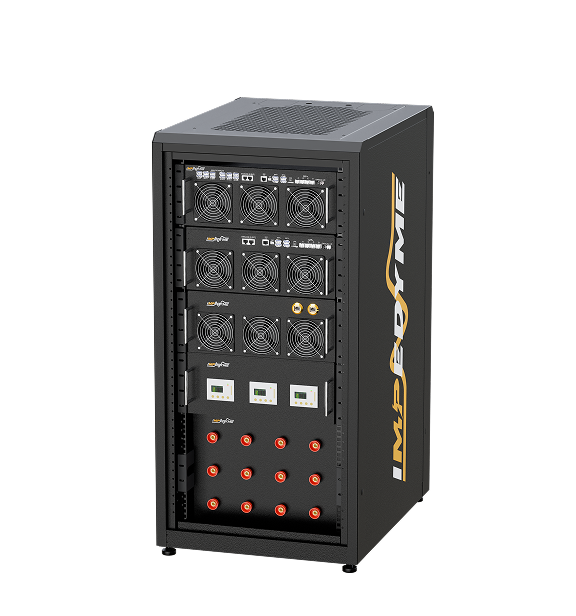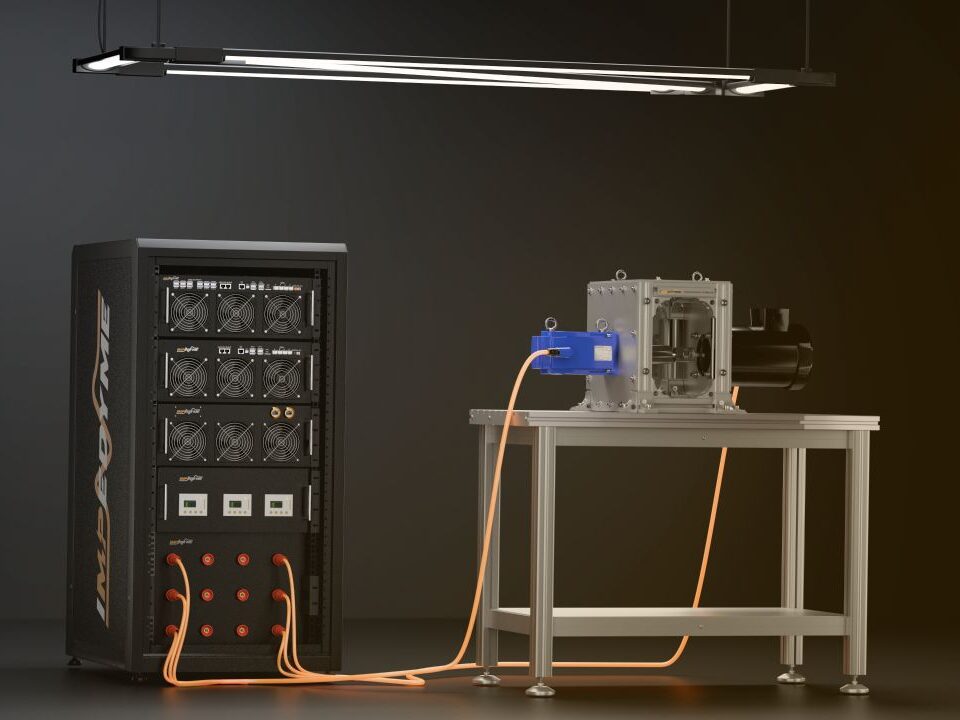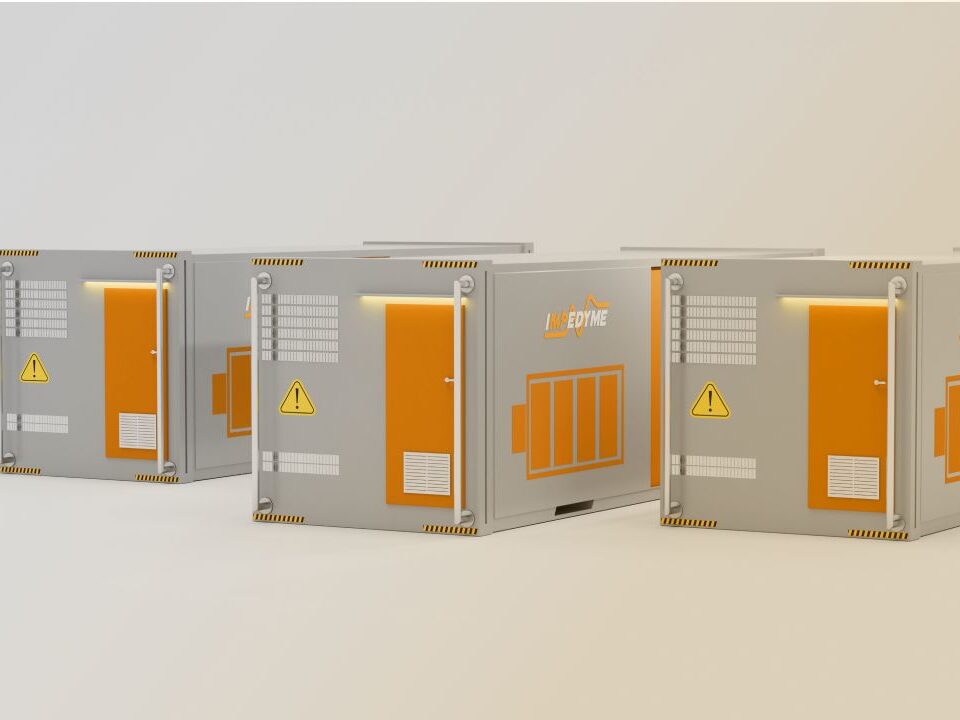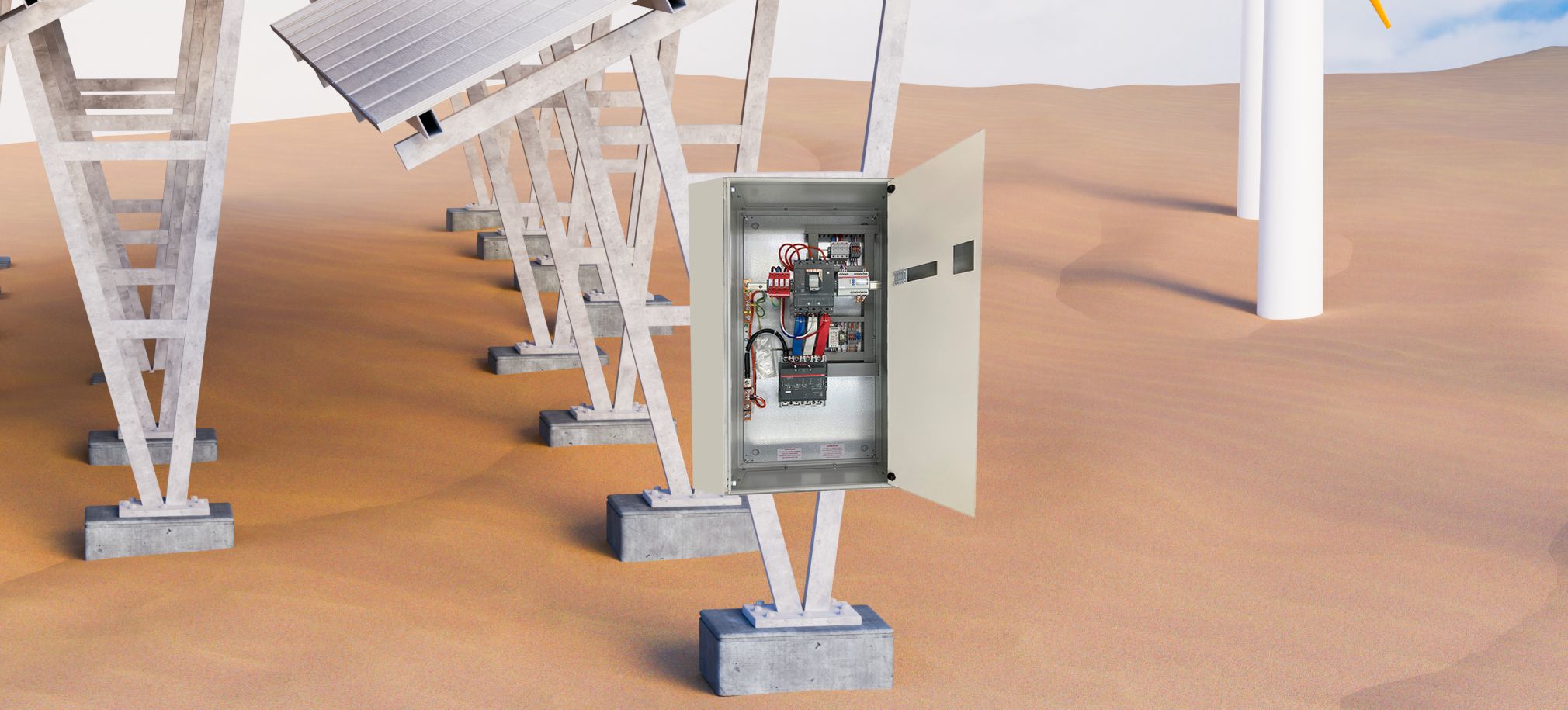
-
 Induction Motor
Induction Motor
-
 Automotive Electrical System Simulation
Automotive Electrical System Simulation
-
 DC/DC Bidirectional Converter
DC/DC Bidirectional Converter
-
 PWM Control for Brushless DC
PWM Control for Brushless DC
-
 BLDC Motor Control and Drive Simulation
BLDC Motor Control and Drive Simulation
-
 Electric Vehicle Fast Charger Simulation
Electric Vehicle Fast Charger Simulation
-
 DFIG Wind Turbine Simulation
DFIG Wind Turbine Simulation
-
 Dual Active Bridge
Dual Active Bridge
-
 EV Dynamometer Test Environment Simulation
EV Dynamometer Test Environment Simulation
-
 Electric Vehicle Simulation
Electric Vehicle Simulation
-
 Three-Phase Grid-Connected Inverter Using Direct-Q…
Three-Phase Grid-Connected Inverter Using Direct-Q…
-
 Three-Phase Grid-Connected Solar Photovoltaic
Three-Phase Grid-Connected Solar Photovoltaic
-
 Grid-Connected Rectifier
Grid-Connected Rectifier
-
 Grid-Tied Inverter System
Grid-Tied Inverter System
-
 Torque Control in a Hybrid Excitation Synchronous …
Torque Control in a Hybrid Excitation Synchronous …
-
 Wye-Delta Starting Circuit
Wye-Delta Starting Circuit
-
 IPMSM-Based Axle-Drive
IPMSM-Based Axle-Drive
-
 Simplified Parallel Hybrid Electric Vehicle
Simplified Parallel Hybrid Electric Vehicle
-
 Simplified Series Hybrid Electric Vehicle
Simplified Series Hybrid Electric Vehicle
-
 Series-Parallel Hybrid Electric Vehicle
Series-Parallel Hybrid Electric Vehicle
-
 Three-Phase Matrix Converter Simulation
Three-Phase Matrix Converter Simulation
-
 Venturini Modulation for Three-Phase Matrix Conver…
Venturini Modulation for Three-Phase Matrix Conver…
-
 Microgrid Frequency Regulation Using Vehicle-to-Gr…
Microgrid Frequency Regulation Using Vehicle-to-Gr…
-
 Three-Phase Modular Multilevel Converter
Three-Phase Modular Multilevel Converter
-
 Field-Oriented Control
Field-Oriented Control
-
 Interior Permanent Magnet Synchronous Generator
Interior Permanent Magnet Synchronous Generator
-
 Permanent Magnet Synchronous Machine
Permanent Magnet Synchronous Machine
-
 PMSM Rotor Angular Velocity
PMSM Rotor Angular Velocity
-
 PMSM-Based Electrical Traction Drive
PMSM-Based Electrical Traction Drive
-
 Maximum Power Point Tracking
Maximum Power Point Tracking
-
 Six-Phase Permanent Magnet Synchronous Machine
Six-Phase Permanent Magnet Synchronous Machine
-
 Synchronous Machine-Based Electrical Drive Simulat…
Synchronous Machine-Based Electrical Drive Simulat…
-
 Single-Stage Solar Inverter
Single-Stage Solar Inverter
-
 Three-Phase Cycloconverter Simulation
Three-Phase Cycloconverter Simulation
-
 Totem-Pole PFC Simulation
Totem-Pole PFC Simulation
-
 Twelve-Pulse Thyristor Rectifier
Twelve-Pulse Thyristor Rectifier
-
 Two-Wheeler On-Board Charger
Two-Wheeler On-Board Charger
-
 Vienna Rectifier Simulation
Vienna Rectifier Simulation
-
 High-Voltage Direct Current
High-Voltage Direct Current
-
 Wireless Power Transfer
Wireless Power Transfer
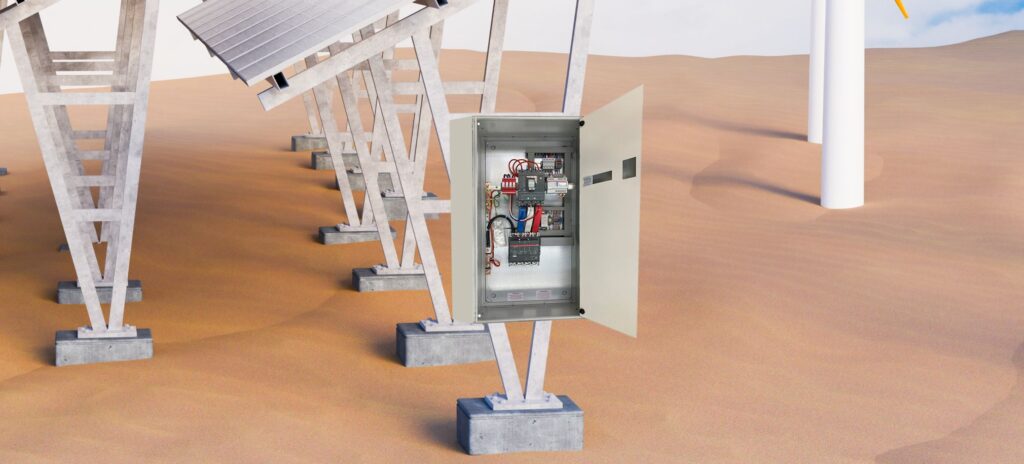
Comprehensive Documentation for Grid-Connected Rectifier with DC-Link Voltage Control Simulation
Table of Contents
- 1 Comprehensive Documentation for Grid-Connected Rectifier with DC-Link Voltage Control Simulation
- 1.1 Introduction
- 1.2 System Overview
- 1.2.1 What is a Grid-Connected Rectifier with DC-Link Control?
- 1.2.2 Purpose of the Simulation
- 1.3 Key Features
- 1.3.1 DC-Link Voltage Regulation
- 1.3.2 Grid-Side Current Control for Power Factor Correction (PFC)
- 1.3.3 Rectifier with Sinusoidal Current Control
- 1.4 Simulation Objectives
- 1.5 Technical Description
- 1.5.1 System Configuration
- 1.5.2 Control Methodology
- 1.6 Advantages of Grid-Connected Rectifiers
- 1.7 Applications
- 1.7.1 Industrial Motor Drives
- 1.7.2 Uninterruptible Power Supplies (UPS)
- 1.7.3 Electric Vehicle (EV) Charging Infrastructure
- 1.7.4 Renewable Energy Systems
- 1.8 Simulation Benefits
- 1.9 Summary
- 1.10 Future Enhancements
- 1.10.1 Induction Motor
- 1.10.2 Automotive Electrical System Simulation
- 1.10.3 DC/DC Bidirectional Converter
- 1.10.4 PWM Control for Brushless DC
Introduction
DC-link voltage regulation is essential in grid-connected power electronics applications to ensure stable operation and efficient power conversion. This simulation models a grid-connected rectifier with a PI-based cascade control structure for precise DC-link voltage regulation. The system enables power factor correction (PFC), voltage stability, and improved energy efficiency, making it a key component in renewable energy systems, motor drives, and HVDC applications.

System Overview
What is a Grid-Connected Rectifier with DC-Link Control?
A grid-connected rectifier converts three-phase AC power into regulated DC voltage, ensuring stable operation through DC-link voltage control. This is achieved using a cascade PI controller that manages grid-side current and DC-link voltage to enhance power quality and system performance.
Purpose of the Simulation
The simulation aims to:
- Analyze DC-link voltage regulation under varying load conditions.
- Evaluate power factor correction (PFC) techniques to ensure high efficiency.
- Validate rectifier control strategies for stable grid integration.
Key Features
DC-Link Voltage Regulation
The PI-based cascade control structure ensures stable and precise DC-link voltage regulation.
➡️ HIL/PHIL Benefit: Enables real-time testing of voltage control strategies.
Grid-Side Current Control for Power Factor Correction (PFC)
The system actively controls grid-side current to maintain a near-unity power factor, reducing harmonics.
➡️ HIL/PHIL Benefit: Allows hardware validation of power quality improvements.
Rectifier with Sinusoidal Current Control
A PWM-controlled rectifier ensures low harmonic distortion and high efficiency.
➡️ HIL/PHIL Benefit: Supports real-time inverter switching tests.
Simulation Objectives
This simulation helps evaluate:
- Effectiveness of DC-link voltage control techniques.
- Grid-side current control for reduced harmonics and improved PFC.
- Performance of different rectifier control strategies.
➡️ HIL/PHIL Benefit: Provides real-time validation before hardware deployment.
Technical Description
System Configuration
- Input: Three-phase AC grid voltage.
- Output: Regulated DC-link voltage.
- Power Stage: PWM-controlled rectifier with DC-link capacitor.
Control Methodology
- Outer Control Loop: PI controller for DC-link voltage regulation.
- Inner Control Loop: PI-based current control in the d-q reference frame.
- Grid Synchronization: Phase-Locked Loop (PLL) for phase and frequency matching.
➡️ HIL/PHIL Benefit: Enables real-time tuning of control parameters.
Advantages of Grid-Connected Rectifiers
- Stable DC-Link Voltage: Ensures consistent power conversion for connected loads.
- Improved Power Factor: Active control maintains high power quality.
- Low Harmonic Distortion: Grid-side current shaping reduces harmonic pollution.
➡️ HIL/PHIL Benefit: Facilitates real-world testing under varying conditions.
Applications
Industrial Motor Drives
Variable Frequency Drives (VFDs): Grid-connected rectifiers with DC-link voltage control are used in VFDs to convert AC power from the grid into DC power, which is then inverted to control the speed of AC motors. Simulations help optimize efficiency and performance.
Pump and Fan Drives: These rectifiers are used in industrial pumps and fans to improve energy efficiency and process control.
Uninterruptible Power Supplies (UPS)
Data Centers: Grid-connected rectifiers are used in UPS systems to provide stable DC power for servers and critical IT infrastructure. Simulations ensure reliable operation during grid disturbances.
Industrial Facilities: These rectifiers provide backup power for sensitive industrial processes, ensuring uninterrupted operation during power outages.
Electric Vehicle (EV) Charging Infrastructure
On-Board Chargers: Grid-connected rectifiers with DC-link voltage control are used in EV on-board chargers to convert AC power from the grid into DC power for battery charging. Simulations optimize charging efficiency and thermal management.
DC Fast Chargers: These rectifiers are used in DC fast chargers to regulate DC-link voltage, ensuring efficient and stable power transfer to EVs.
Renewable Energy Systems
Wind Turbines: Grid-connected rectifiers are used in wind energy systems to convert variable-frequency AC power from the generator into stable DC power for grid integration. Simulations ensure efficient power conversion and grid compatibility.
Solar Power Systems: Rectifiers are used in solar inverters to convert DC power from solar panels into AC power for the grid. DC-link voltage control ensures stable operation and efficient power transfer. ➡️ HIL/PHIL Benefit: Supports real-time emulation for different applications.
Simulation Benefits
With this simulation, users can:
- Analyze DC-link voltage stability and transient response.
- Optimize control strategies for improved power quality.
- Evaluate real-time grid interactions and dynamic performance.
➡️ HIL/PHIL Benefit: Ensures seamless transition from simulation to real-world deployment.
Summary
The Grid-Connected Rectifier with DC-Link Voltage Control Simulation provides a detailed framework for studying rectifier-based DC-link regulation. Impedyme’s HIL and PHIL solutions enhance the development process:
| Development Stage | Impedyme’s Contribution |
|---|---|
| DC-Link Control Design | HIL-based real-time voltage regulation testing |
| Grid Synchronization | PHIL with real grid interaction |
| Power Factor Optimization | Harmonic analysis for grid compliance |
| Load Transient Testing | Real-time response evaluation |
Future Enhancements
- Integration of adaptive control for enhanced voltage stability.
- Development of AI-based power factor correction algorithms.
- Simulation of advanced rectifier topologies (e.g., Vienna Rectifier, Multi-Level Converters).
The Grid-Connected Rectifier with DC-Link Voltage Control Simulation provides a comprehensive testing environment for optimizing DC-link voltage regulation, power factor correction, and grid integration. With Impedyme’s HIL/PHIL solutions, engineers can enhance efficiency, stability, and power quality, ensuring reliable AC-DC conversion for modern power systems.
